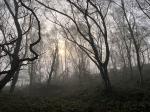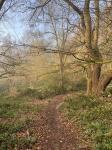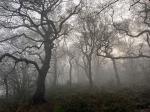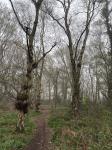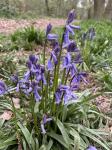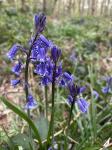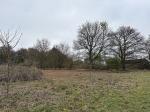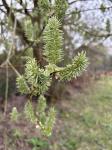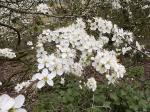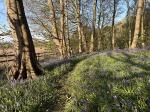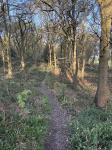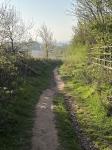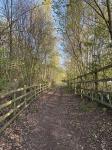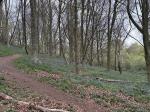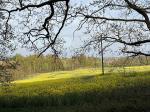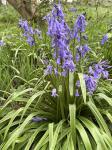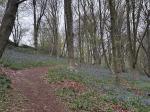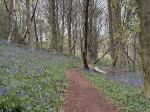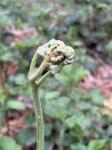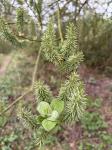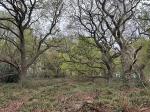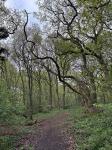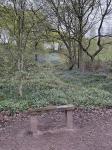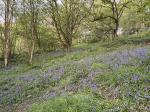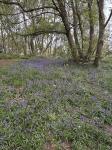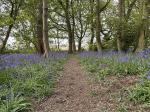Brayton Barff Through the Seasons.
Set in the Vale of York, South West of the market town of Selby and between the villages of Thorpe Willoughby and Brayton, lies Brayton Barff, a sandstone Hill approximately one hundred and fifty feet in height which was formed by glacial movement during the last Ice Age. It is a significant landmark in an otherwise flat landscape.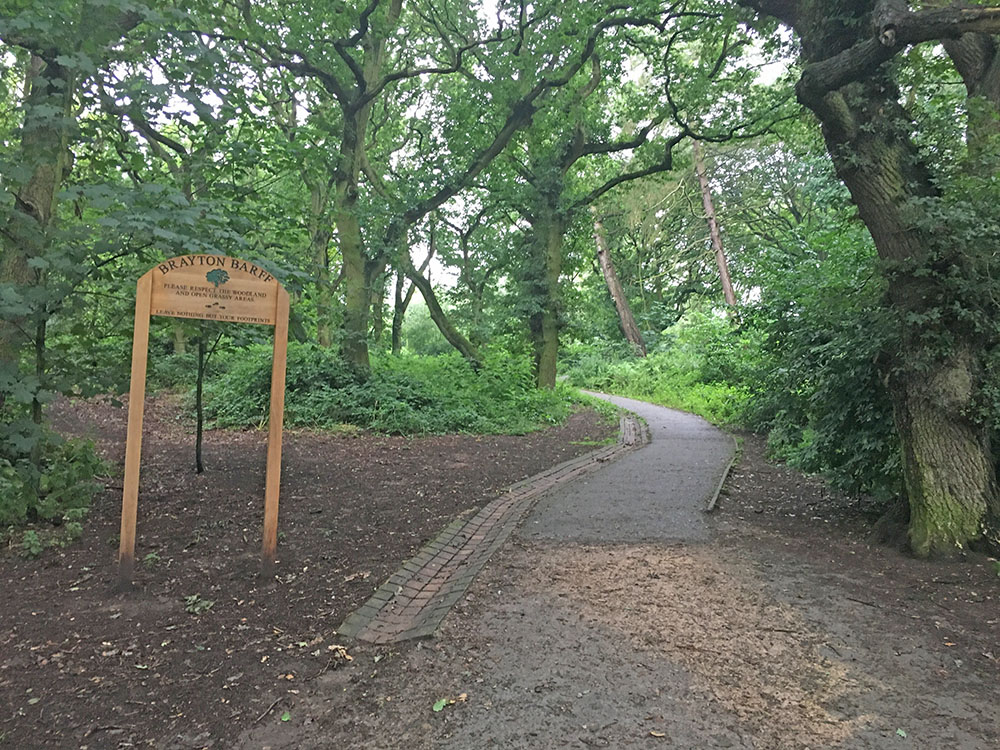
Today the site is primarily owned by Yorkshire Water with Selby District Council owning a small patch of the land adjacent to the A63 Selby bypass. A large underground reservoir occupies the centre of the site which delivers water to around 4.7 million customers throughout Yorkshire.
Within the Barff woodland over 40% of the trees are Sessile Oak which are generally found in semi natural woodlands in the north of the country. These trees are so called because its acorns are not held on stalks, like those of the English Oak (Pedunculate), but attached directly to the outer twigs. There are also several English Oak trees as well as some cross-hybrid oaks. These trees are known to support many species of flora and fauna, invertebrates, mosses, lichen and fungi.
During the Victorian times it is thought that the shipbuilders on the east coast would come over to the Barff for selected cuts of timber to build their sea going vessels.
The Barff also has a variety of other trees including Silver Birch, Beech, Sycamore, Holly, Rowan, Scots Pine, Alder, Hawthorne and European Larch. There are also several Yew, Willow, Hazel, Horse Chestnut and Wych Elm. As with similar woodlands there are a variety of bushes, including Honeysuckle, Elderberry, Gorse, Broom and Buddleia.
The history of Brayton Barff is quite vague, apparently during 1803 a beacon was lit on the Barff when the country was threatened with an invasion by Napoleon. In May 1935, to celebrate King George V's Silver Jubilee, a Bonfire was lit on the Barff as part of the celebrations.
Early issues of Ordnance Survey Maps dated 1903 clearly show a rifle range on the Barff, extending out to Mill Lane. During the 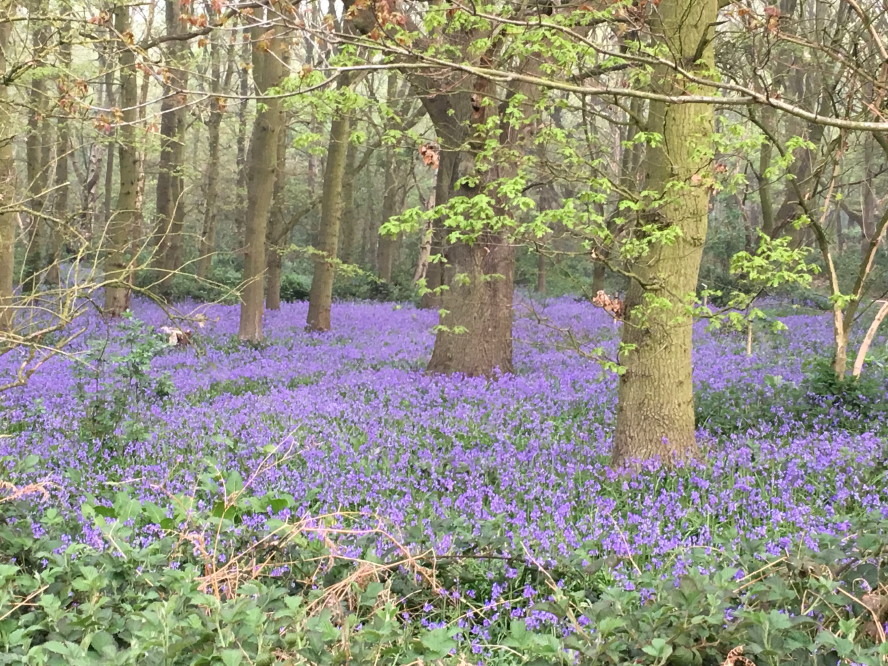
Between 2001 – 2004 the A63 Selby bypass, 10km twin lane single carriageway was constructed which severed the South West corner of the Barff, adjacent to Selby Golf Course and resulted in a slight redesign of several holes on the golf course. Wooden fencing was erected as a result of this new road running alongside of the Barff and a footbridge constructed over the ‘new road’ following the line of the Bridal way which extends from Mill Lane. Around 2005/2006 a definite 2metre wide limestone aggregate footpath was laid forming a circular path around the outer edges of the woodland. This footpath is approximately 1.2 miles in length and takes about 30 minutes to circumnavigate at a leisurely pace.
In 2012 the Barff was declared an Ancient Oak Woodland and as such throughout 2012 and 2013 significant work had been carried out by the relevant agencies to cut and remove large swathes of non-native trees, creating at that time huge scars on the landscape. Some three years later the planting of the native trees have become well established and are flourishing. Ongoing maintenance work on the footpath around the bottom of the Barff was completed during the Summer of 2016.
A second phase of woodland maintenance commenced during the Autumn of 2019 with the removal of many old and diseased trees and the cutting back of the Gorse and Broom bushes, especially adjacent to the ‘bypass trail’, this work continued through till March 2020 with re planting continuing into April 2020.
Brayton Barff is a popular site for walkers and bird watchers alike and a path circling the outer perimeter of the Barff makes a pleasant thirty minute walk, giving views looking over towards Selby and the village of Brayton as well as the power stations of Drax and Eggborough..jpg)
For the early risers it is a great place to see some stunning sunrises over the villages of Brayton looking towards Drax Power Station, the same with the Sunsets looking over towards Eggborough and Monk Fryston.
The Barff changes with the Seasons and every visit can reveal something new, the woodland is a haven for wildlife. Records show that since 1982 one hundred and twelve species of bird have been seen in the woodland and at least 40 of those have bred here, including Tawny Owl, Buzzard, Green Woodpecker, Spotted Flycatcher, Goldcrest and Nuthatch to name just a few. On average over 70 species of bird are recorded each year. Further details of the bird life on the Barff can be found on the Brayton Barff Group Facebook page, especially the posts from Derek Cooper. Today ‘The Friends of Brayton Barff group’ led by Derek and a small team of volunteers help keep and maintain the cleanliness of the site as well as recording the wildlife and bird sightings.
The Barff is also home to fifteen different species of mammals, including Muntjac Deer, Pipistrelle Bat, Fox, and Field Vole.
Over eighty species of plant and wildflowers have been recorded, included Bee Orchid, Northern Marsh Orchid, Wood Anemone, Marsh Ragwort, Bluebell, White Bluebell, Bittersweet and Purple and White Foxgloves. Over twenty species of Butterfly have been recorded, including Marbled White, Brown Angus, Speckled Wood, Comma and Brimstone.
During the Autumnal months fungi thrives in this woodland environment, species including Fly Agaric, Beefsteak Tree Fungi, Chicken of the Wood, Sulphur Tufts, Stinkhorn, Ink cap, Puffballs and Hoof Bracket are just some of the many varieties that can be found here.
Click on the galleries shown below to expand the albums.
April 2025
The first week of April has been very dry, the whole country is currently stuck under a high pressure at this time, which has resulted in light overnight frosts and dry bright and sunny days with midafternoon temperatures ranging between 12c – 13c only a cool northerly light breeze keeping the temperature down.
This fine and dry, sunny weather we have been experiencing these past two weeks is due to something called an ‘Omega blocking pattern’. While we are used to weather systems largely being driven across the Atlantic one after the other, bringing a variety of conditions, sometimes the pattern just gets stuck and the weather becomes very static and any changes happen very slowly. These blocked patterns can bring extremes in weather depending on where and when they develop - high temperatures and sunshine in the summer or endless cloud in the winter, and it is one of those jams that has created the current situation in the UK.
Chiffchaff, Song Thrush, and Wren have dominated the morning dawn chorus, accompanied by Robin, Blackcap, Great Tit, Blue Tit, and the gentle cooing of the Wood Pigeon. Greater Spotted Woodpecker has been heard most mornings drumming away and seems to have made its home close to the service road entrance. The sunshine and cold frosty mornings have suited the emergence of the flowering Bluebells especially along the eastern fringes of the woodland. Blackthorn blossom has been in full flower, especially along the Bypass trail. Lesser Celandine continues to flower around the woodland appearing in small patches, its shiny, yellow star-like flowers with eight to twelve petals is one of the first spring plants to come in to flower, providing a valuable nectar source for early insects. Cow Parsley is flourishing on the verges of the perimeter footpath, it is hard to believe that come mid spring it will be at least three to four feet in height!
The second week of the month has been much the same as the first, another dry bright and sunny week although this week we had a couple of grey cloudy days, no rain throughout the week. It has still been quite cold overnight with several light overnight frosts. The Oilseed rape in one of the adjoining fields is in full flower. Bluebells are flowering day on day. Lesser Celandine, Wood Anemone and Wood Sorrel are flowering nicely in patches around the woodland. Song Thrush and Chiffchaff have dominated the birdsong in the woodland. Willow Warblers have increased throughout the week. The Buzzard has been active especially around the old pump house. Robin and Wren are actively feeding their chicks at the moment, along with the Blackbirds busily going about their business scavenging amongst the leaf litter. Blackthorn blossom is beginning to fade but apple blossom especially along the bypass trail is looking good. The Gorse is still looking colourful in flower.
Contractors have cleared a huge swathe of Bramble on the top summit in preparation for the ground work to commence anytime soon.
It has been nice to see sheep back in one of the adjoining fields enjoying the pasture and sunshine.
The start of the third week saw quite a change in the weather, with overnight rain and some grey and cloudy mornings. Ferns are beginning to unfold; Cow Parsley and Garlic Mustard is growing at an alarming rate alongside the perimeter footpath. Lesser Celandine is still in flower, as are the Bluebells which are probably at their best this week and Dandelions too. Chiffchaff are still chaperoning us around the woodland, I am hearing well over twenty of them on my daily walks. Willow Warbler, Blackcaps and Dunnocks are becoming more vocal and frequent and lots of juvenile Robins are flitting around the main perimeter path, playing catch me if you can with Meg and Gracie.
The wet weather was short lived and dry sunny mornings continued for the remainder of the week. I had been down in Kent for the Easter weekend and on my return to the woodland the transformation was significant in that the trees had come into leaf and everything was looking lush and green.
As the month draws to a close the dry, bright, and sunny weather has continued, the early morning temperature has been around 10c rising to 23c on average late afternoon. Garlic Mustard, are still in flower as is the Cow Parsley which is also in flower and standing at around four feet in height. Ferns are shooting up overnight, their stems standing tall with the fronds slowly unfolding and are now dwarfing the poor Bluebells. The potatoes are beginning to poke through in one of the adjoining fields
Birdsong continues apace from the Song Thrush and Mistle Thrush, ably accompanied with Wren, Blackcap, Willow and Garden Warblers, Robin, Blue Tit, Great Tit and Chaffinch. More Robin chicks are appearing around the woodland this week, their speckled breast and lighter colour giving their game away. They stay with their parents for up to three weeks after fledging, with males predominantly caring for youngsters while females prepare for the next brood. These youngsters can fly a few days after leaving the nest and appear eager to show off their flying skills as we walk through the woodland. One of the highlights for me this week was hearing my first Cuckoo of the year on the 29th April. There is no sound more eagerly awaited in the Spring than the loud, ringing repeated song of the Cuckoo. They usually arrive in this country during the second or third week of April, from their winter quarters in Africa. Its arrival is often noted in the letter’s column in the Times newspaper such is its interest. After their arrival they spread out over most of the country looking for foster parents to look after their young. The double noted Cuckoo which I heard is the male’s courtship song. The female has a bubbling trill. After mating the adult birds leave Britain, flying south in July and early August. Their newly fledged youngsters hang on till September after leaving their foster parents. Then they migrate, finding their way unaided to their winter quarters in Africa.
Walking over the top meadow on the summit of the Barff, Willow Catkins have been a picture this year their long thick florets now littering the floor, especially near the corner of the perimeter fence. Oak trees too, though their Catkins are less densely packed than those on other trees. Hawthorn and Rowan trees are flowering nicely as are the Apple and Cherry blossom trees. The Blackthorn bushes along both sides of the Bypass trail are growing fast and now standing between four to five foot in height and in full leaf. The undergrowth along the bypass trail continues to thrive too with the actual path narrowing week on week.
April on the Barff has been all about the Bluebells and the return of many of our summer birds, including the Song Thrush, Mistle Thrush, Garden and Willow Warbler, Dunnock, and Blackcap and all their emerging chicks. I am very much looking forward to seeing what May brings us on this wonderful woodland of ours.
|

